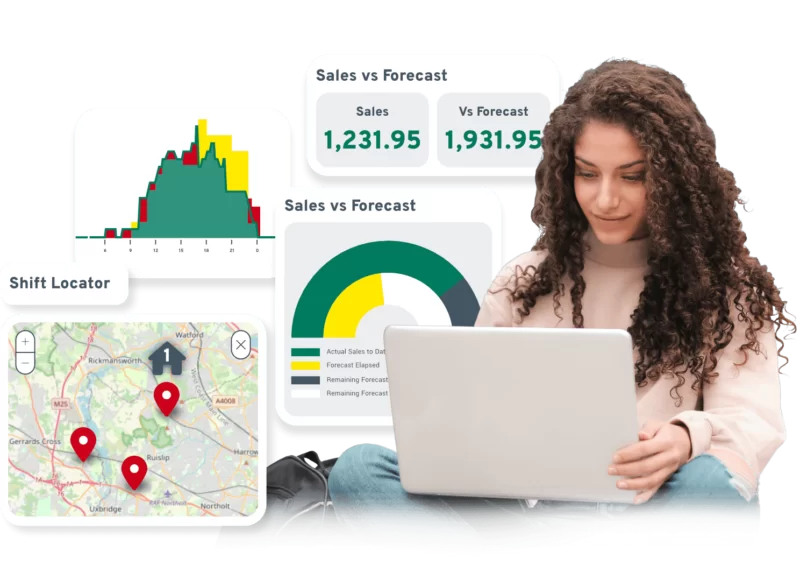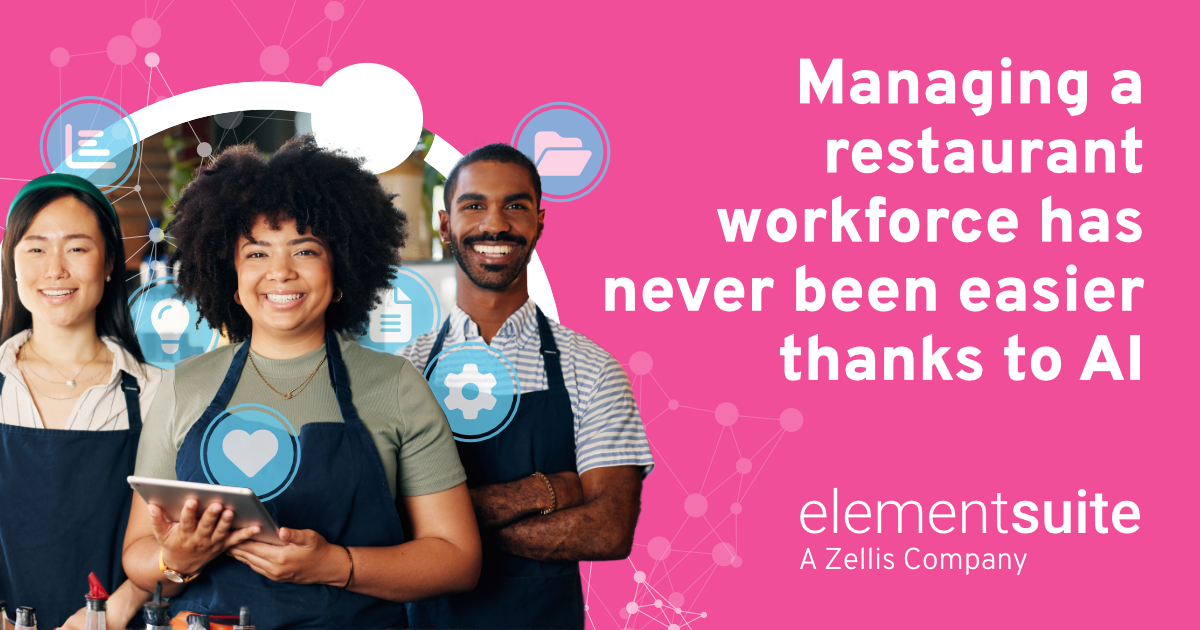How do you know when it’s time to upgrade your HR software? If we were to put it in simple terms, it would be when your current software no longer meets the needs and demands of your organisation. But how exactly do you determine that?
Seven signs that it’s time for an upgrade
HR is transforming into a more strategic and data-driven function, and your HR software must align with this evolution. It should equip you with the necessary tools to manage your workforce swiftly and efficiently, allowing you and your team to concentrate on the broader vision.
So, if you are debating whether it’s time to upgrade your HR software, here are seven signs that you should look out for:
1. You still rely on manual processes, spending too much time on rectifying human error
Traditionally, HR processes such as contract management, employee data entry, and leave requests were done manually. However, with the rise of process automation, most HR tech brands advertise how they can handle these processes for you.
But, lo & behold, you still find yourself manually sending out contracts and uploading employee data into the platforms yourself. This defeats the purpose of automation. Your HR software should be able to streamline these tasks for you.
Your HR software should have the capability to create employee documentation templates, allow for easy personalisation, send and automatically upload them, and track when they are completed – all in one secure platform. Employee data should also be able to be uploaded & updated automatically in the background, freeing up your time and reducing human error. This should be continuous and in real-time.
Say, for instance, an employee worked overtime. This should be automatically recorded with the correct pay scales calculated on the spot. Or, if an employee was promoted, their salary should automatically be recalculated and updated without any manual intervention.
Essentially, your HR system should be able to take over the majority of your manual tasks – with minimal manual intervention.
So, if you find yourself spending too much time manually handling these tasks – despite having a platform in place – it’s a clear sign that your HR software is no longer meeting the needs of your organisation.
2. Inefficient scheduling processes
Managing employee schedules can be a headache – ensuring that all shift patterns are covered while meeting business needs and avoiding conflicts with employee availability and skills. Your HR software should be able to make this process more manageable and efficient for you.
But it is more than just having a module that helps you input shifts. Your HR software should have the capability to automatically update and propose new schedules based on employee availability, capabilities and Working Time Directives (WTD). If an employee falls sick, it should inform you of available staff that meet the shift requirements and even propose alternative schedules that adhere to legal compliance.
Most importantly, your HR software should have integration capabilities to allow you to forecast labour demand based on operational requirements such as upcoming bookings, projects, and sales. You should be able to align workforce management with the shape of the day and tweak it in real-time so that you can keep up with your business’s unpredictable ebbs and flows.
Your business’s future depends on your HR team’s ability to predict how your workforce makeup will change as the business evolves. If your HR software does not have these capabilities, then without sounding like a broken record – it’s time for an upgrade.

3. Inefficient performance management
Your employees are your most valuable asset, and managing their performance is crucial for the success of your organisation. With that, modern HR professionals increasingly recognise that traditional annual reviews are outdated. Instead, they are shifting towards frequent performance conversations and feedback to improve employee engagement and development.
But, we find that many entry-level HR software programs do not have a robust performance management module or the ability to integrate with other tools that can support this process.
It’s time for a change. Your employees’ performance is what drives your organisation’s success, so if your HR system does not allow for continuous performance management and feedback, it’s time to upgrade.
Look for a system that allows for regular check-ins, goal setting, and progress tracking throughout the year. Your HR software should align with modern performance management processes and, without compromise, talk with other business systems to allow you to view data in one place.
4. You are inundated with employee HR queries
With all the AI chatbots and virtual assistants available today, employees now expect quick and easy access to information. They do not want to wait two working days for HR to respond to that reference for the ever-important mortgage application, or to find out their family leave entitlements.Neither does your HR team want to spend all day responding to these queries.
HR is on the precipice of shifting to more strategic business partners that drive business success. But if they don’t have the right tools to help with employee self-service, then this is impossible.
Most HR software’s will have self-service capabilities in one way or the other. The majority allow for easy absence approval, self-service portals for employees to access their data and make updates, and real-time notifications on any policy changes or updates. But in reality, they haven’t really reduced the number of HR queries coming in. They don’t answer employees’ questions without having to sieve through mountains of information.
A modern and efficient HR software should go beyond this basic functionality. It should use AI-powered chatbots to handle common HR queries in natural language. The goal should be to enhance the employee digital experience and empower them to gain access to the information they need when they need it – freeing up your HR team’s time for more strategic tasks.
A Generative AI chatbot such as ELLA integrated into your HR system can provide this seamless self-service experience for employees while reducing HR’s workload. This is the future of employee self-service in HR, and if your current system does not have this feature, it’s time to consider looking into a new one.
5. Lack of real-time insights
If your HR system still requires you to manually input data from different sources to generate reports or analytics, then you have a significant issue. The thing about manual processes is that they are often slow and not very accurate. By the time your HR team has gathered all the required data and analysed it, the insights may no longer be relevant or timely.
Take, for instance, your engagement surveys. It could take weeks or months to gather the data, analyse it, and devise a strategy to address any concerns. By then, however, your results aren’t exactly relevant to the current state of the organisation.
An efficient HR system should be able to provide real-time insights. This means that data is captured and analysed in real-time, allowing for timely decision-making. You should be able to double-click on any data point to drill down into the specifics and gain deeper insights, merge data from multiple sources, and view it all on one dashboard.
HR data insights should not be a luxury. It should be available to you at any time without the need for manual input or data manipulation. We want to be able to take these insights and make data-driven decisions that will drive our organisation forward. This is also an absolute given if we want to influence the C-suite, prove HR’s ROI, and safeguard our organisation for the future. So, if your current HR system doesn’t provide real-time insights, it’s time to get one.
Read more about why Owen Mumford chose elementsuite as their HR software of choice to streamline their HR processes
6. Lack of HR system integration
As we discuss data analytics and the need for real-time insights, we must also consider the integration capabilities of our HR system. Do all your people systems talk to each other, or do you manually input data from one system to another?
To gain a complete view of your people data insights and be able to make strategic decisions, all your people systems need to be connected and integrated. No more data siloes. You need to be able to view how employee engagement affects staff turnover, how performance correlates with productivity, and answer the pressing business questions of your C-suite with just a few clicks.
You also want your operational systems, such as project management, booking systems, and finance tools, to integrate with your HR system when calculating budgets and forecasting workforce needs.
So, if you still use multiple systems that don’t talk to each other, it’s time for a change. Look for a HR software that seamlessly integrates all your people and operational systems to maximise efficiency and insights.
7. Lack of regular updates
Technology is constantly evolving, and so should your HR software. New security threats emerge, data privacy regulations change, and new features should added to improve efficiency. If your HR system has not had any significant updates in the past year (or better yet, in the past week), then it’s time to consider switching to a more up-to-date solution.
Employee data is sensitive and needs to be protected, which is why you need to make sure your HR system is up to date with the latest security measures and compliance regulations. Your HR software provider should also regularly update their system with new features and functionalities to keep up with the changing needs of businesses and employees.
At the end of the day, an outdated HR system can not only put your data at risk, but it can also hinder your end-user adoption. Employees want to use modern and efficient systems, not outdated ones. So, investing in a regularly updated HR system is crucial for the success of your organisation.
Risks associated with using outdated software
As you can see, using an outdated HR software carries more risk than it is worth. From potential security breaches and data and process inefficiencies to the inability to keep up with evolving business needs and demands, it can hinder your organisation’s growth and success.
Not only that, but it also strains your HR team, who are often left spending more time on administrative tasks rather than focusing on strategic initiatives. With research emphasising the current HR burnout epidemic, is it really worth sticking to a system that is causing more harm than good?
It’s time to take action and invest in a modern, integrated HR software that will improve overall process efficiency and provide real-time insights that inform strategic decision-making. Don’t let an outdated software hold your organisation back—make the change today for a better tomorrow. If you’re not sure where to start when it comes to buying new HR software, check out our HR toolkit here. And you can even sign up to our upcoming webinar all about how you can become an expert in buying HR software.
Want to learn more about how we can help you streamline your HR processes and drive business success? Contact us today to schedule a demo and see our modern, AI-driven HR software in action.




